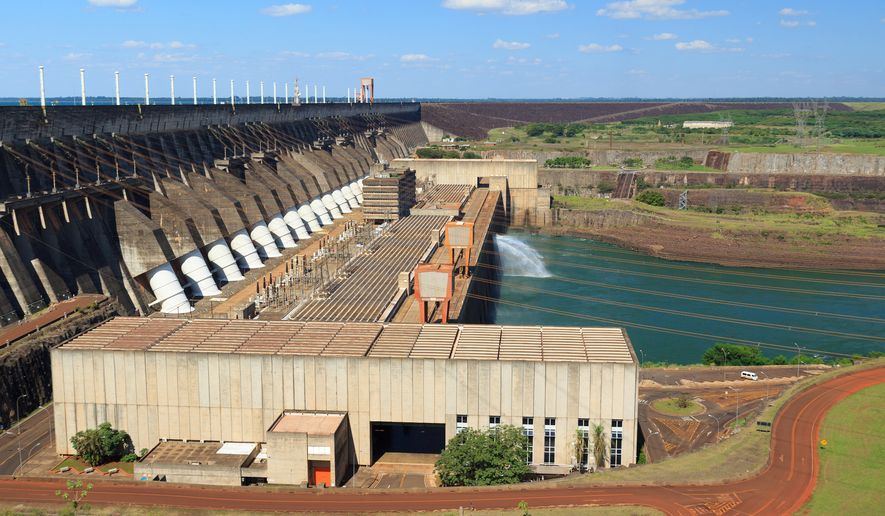OPINION:
Nearly five decades ago, engineers from Brazil and Paraguay came together to resolve a centuries old land dispute by working together in a binational capacity to build a revolutionary hydroelectric power plant designed to supply electricity to both countries.
The political and scientific success of Brazil’s Itaipu Binacional hydroelectric power plant has not only proven that renewable energy and sustainable development is effective, but that hydroelectric energy projects can increase clean energy output, and that binational coordination can help build trust between neighboring nations.
Here is the backstory: One of the largest hydroelectric plants in the world, the idea for the Itaipu Binacional emerged after state officials realized they could take advantage of the enormous energy potential of the Paraná River—the eighth largest on the planet—and simultaneously end a centuries-old dispute of land on the border between Brazil and Paraguay.
Committed to both political and scientific progress, both countries saw a diplomatic solution to the territorial problem that would enable their nations to reap the benefits of the border they share by utilizing good engineering and common sense energy solutions.
Almost five decades since the plant started construction, cooperation between Brazil and Paraguay remains strong.
The idea for Itaipu was hatched in the 1960’s during talks between the two nations, and in 1966 the two countries signed a joint declaration, the Iguacu Act, which memorialized their commitment to exploring ways to jointly harvest energy from the Parana River along their border.
The project was such an inspiration in fact, that shortly after both countries signed a treaty in 1973 committing to building the hydroelectric dam, the first Latin American electric car, which was built the following year in Brazil, was also named Itaipu, after the project.
The dam was completed in 1982 and began generating power in 1984. Today, the plant boasts 14,000 MW of installed power and is now the largest generator of accumulated energy in the world. It has produced more than 2.8 billion megawatt-hours (MWh) of electrical power for the people of Brazil and Paraguay since its opening.
One of the links that continue to pull our countries together is our reliance on one another’s data and our joint effort to ensure that while producing hydroelectricity, we also continue to take care of our water. Since the beginning of the plant’s construction, we have recovered and protected almost 1,397 kilometers of riparian forests on the Brazilian side of our reservoir.
We also planted 24 million trees and take care of rivers, springs and more than 100,000 hectares of preserved areas in Brazil and Paraguay, a measure that contributes to the preservation of the Atlantic Forest.
As a result, we were recognized by UNESCO as one of the Atlantic Forest Biosphere Reserves, the highest global environmental protection status, awarded by the United Nations (UN) and also recognized around the world as a model for preserving the environment, meeting all 17 Sustainable Development Goals (SDGs) of the 2030 Agenda.
Currently we are replacing auxiliary equipment in our 20 generating units. The costs, which have been accumulating for 14 years, are estimated at about $900 million USD. This is the project’s most ambitious action since its construction.
Because of Itaipu’s success, we have also supported studies of new energy sources, such as biogas, biomethane, hydrogen and solar, while our production provides security and resilience to the National Interconnected System (SIN).
We now contribute to the energy and sustainable security of rural producers, through micro-electric grid projects in rural areas while helping them join the system. One of our current projects in line with the guidelines of the Brazilian government made it possible to invest in structuring additional projects for the benefit of society is to inaugurate the new bridge that connects Brazil and Paraguay over the Paraná River, in the Três Fronteiras region.
Known as the Integration Bridge, the structure will further integrate Brazil and Paraguay, shortening distances and strengthening foreign trade and tourism. The construction of the bridge, which began in 2019, is just one of many structuring works funded by Itaipu in the last three years.
Altogether, since 1985, when payments began, more than $12 billion have been released to both nations.
Our commitment to binational infrastructure and energy projects continues to generate electrical energy with social and environmental responsibility while contributing to sustainable development in Brazil and Paraguay.
If binational energy works here, it can work elsewhere. Countries throughout the Western Hemisphere can work together to rely on and support one another while generating clean energy to improve both infrastructure and one of our region’s most prized assets—it’s environment.
• Anatalicio Risden Junior is the Brazilian general-director at Itaipu Binacional.




Please read our comment policy before commenting.